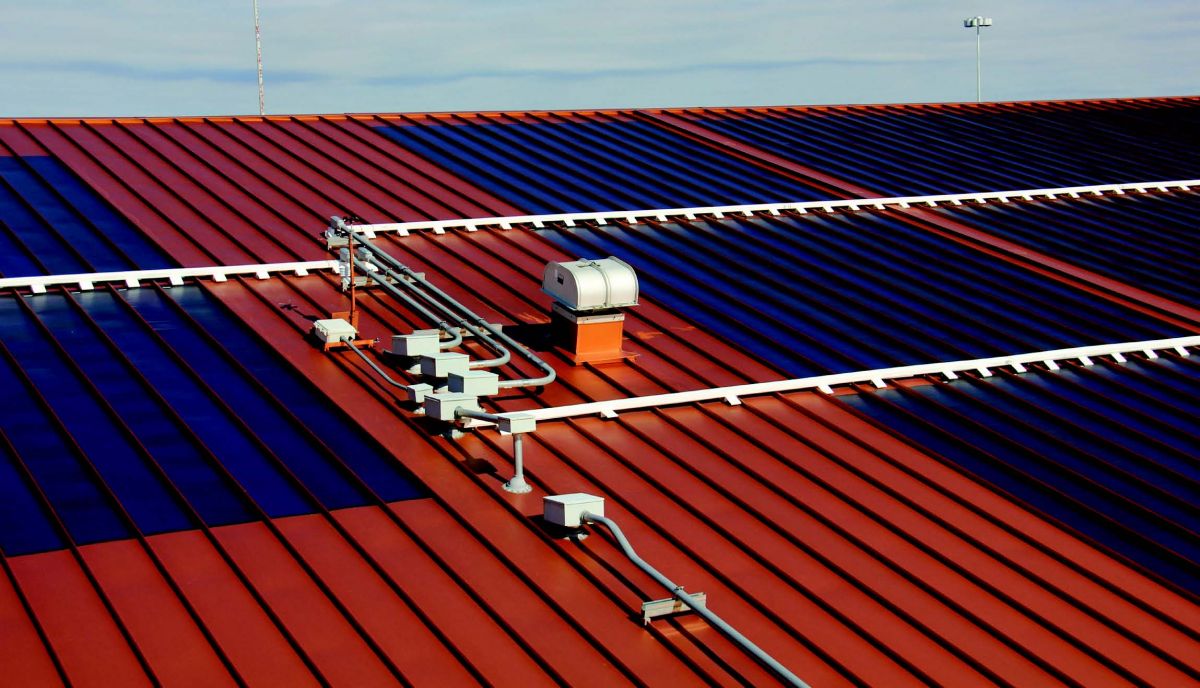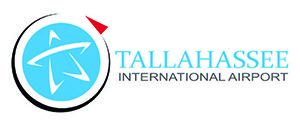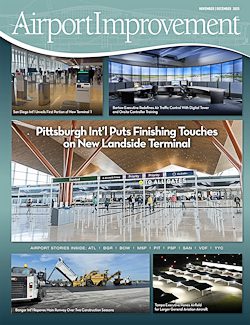Tallahassee International Airport (TLH) is always looking for ways to incorporate “green” elements into its infrastructure development projects and daily operations. It was home to the first solar farm in Tallahassee, and airport officials are redoubling their efforts with another, even larger, farm. Moreover, a sustainability section being added to TLH’s master plan has the potential to make the Florida airport an environmental leader among its U.S. peers.
 “As we work to meet the needs of the airport within our community, it is important we have an eye toward sustainability and how it affects the community,” says TLH Interim Airport Director David Pollard. “We have a commitment to working with our neighborhoods and others as we move forward with future development.”
“As we work to meet the needs of the airport within our community, it is important we have an eye toward sustainability and how it affects the community,” says TLH Interim Airport Director David Pollard. “We have a commitment to working with our neighborhoods and others as we move forward with future development.”
When the city’s electric utility department identified TLH as the perfect location for two solar farms, the city-owned and -operated airport moved quickly to support the projects.
|
Project: Solar Farms & Sustainability Master Plan Location: Tallahassee (FL) Int’l Airport Project Management/Environmental Services: Michael Baker Project Timeline: 1st solar farm came online in 2018; 2nd is scheduled for 2019 Sustainability Management Program Completed: 2018 Phase 1 Environmental Site Assessment: Environmental & Geotechnical Specialists Phase 1 Cultural Resource Assessment Survey: Archaeological Consultants Geotechnical Subconsultant: Ardaman & Associates Design Subconsultant: Genesis Group Tree Survey: LM2 Consulting Boundary Survey: Poole Engineering & Surveying |
“We need to meet the aviation-specific aspects set forth by the FAA and Florida Department of Transportation, but we also need to work so our plans dovetail with the city’s overall plans and directives,” advises Pollard.
The 120-acre, 20-megawatt solar farm that came online in January 2018 is located on airport property, but was financed, built and is operated by Origis Energy USA through a contract with the city of Tallahassee. The airport will collect $60,000 per year in rent from the city.
“The city of Tallahassee is continually implementing innovative approaches to meet the needs of the community, to protect our environment and grow in a responsible way,” says City Commissioner Scott Maddox. “The solar project at the airport represents the positive outcome that can occur through thoughtful planning and focused collaboration. It also shows that TLH is an able, dedicated partner for development opportunities that extend beyond aviation needs.”
Another 40-megwatt farm is scheduled to be completed
in 2019.
Aggressive Schedule
While updating the airport layout plan followed standard procedures, the city’s aggressive timeline for the solar farm presented challenges for Michael Baker, the firm that conducted the environmental assessment for the first solar farm, developed the sustainability master plan and is the project manager. Michael Baker is also preparing the environmental assessment and city environmental reports for the second solar farm.
 According to Mariben Andersen, senior associate and environmental manager with the firm, a typical environmental assessment is completed in nine to 12 months. For TLH, it needed to be completed in four and a half months to meet the construction completion date.
According to Mariben Andersen, senior associate and environmental manager with the firm, a typical environmental assessment is completed in nine to 12 months. For TLH, it needed to be completed in four and a half months to meet the construction completion date.
“The FAA review and agency comments can extend a project,” explains Andersen. “We received commitments from the airport and FAA to compress the review process. Everyone agreed comments had to be done within three days. As a result, when we did the preliminary draft, we already had the city’s review completed and had contacted the agencies to solicit comments on the environmental assessment. There was a lot of legwork and a lot of favors to ask.”
In the environmental assessment document, Michael Baker analyzed four possible locations for the solar farm, identified potential impacts and provided a summary of mitigation efforts to compensate for unavoidable environmental impacts. Based on the analysis, airport officials selected the site that does not interfere with airport operations and poses the least environmental impact.
“We worked closely with the electric utility department to pull the project together to meet the various aviation-specific requirements and FAA reviews,” recounts Pollard. “Working as one team, we were able to move the project forward quickly to receive FAA review and concurrence.”
Ensuring that plans allowed TLH to remain self-sufficient and self-sustaining, per FAA requirements, was a constant goal throughout the project.
“In an arrangement such as this, revenue diversions could pop up,” Pollard points out. “We do not want to give the property up. We want to maintain control around the departure and arrival areas.”
The final arrangement proved to be a win-win for the electric utility department and TLH, he reports.
“In this case, it was a great fit that met some of the city’s sustainability goals and provides revenue for the airport,” explains Pollard.

Master Plan for Sustainability
As part of its ongoing work with TLH, Michael Baker created the airport’s first sustainability management plan to add to its master plan.
The focus on sustainability is not new. In addition to the solar farms, TLH installed solar panels on its terminal building in 2011 and electric vehicle charging stations near the terminal in 2016. The sustainability management plan, which was nearing completion in early October, provides an opportunity to take a new look at the airport’s efforts, notes Pollard.
“With the master plan, we are developing a much bigger picture as it relates to serving the community we are in,” he explains. “At this point, sustainability is an important part of all our future planning.”
Pollard points out that the process—from establishing a vision team to developing related goals and objectives—creates new opportunities for the airport. The vision team included members from other city departments and Leon County.
“The sustainability management plan has allowed us to take a fresh look at our efforts and consider how we can have a more formal approach to sustainability as we move ahead,” he comments.
To create the plan, Michael Baker and the TLH sustainability vision team established six goals to preserve, protect and enhance the environment, and then developed initiatives to help achieve those goals.
According to Andersen, the plan’s success hinges on the engagement of the airport team. “The sustainability management plan is not just about the airport,” she says. “It is about the people who work at the airport and make things happen. We have champions for each objective and goal. We want them to keep working on this plan. The people at the airport are responsible for making this happen.”
Initiatives currently under development include:
• ride-sharing programs for employees,
• enhanced community outreach programs,
• green components for new terminal construction,
• tracking and monitoring the sustainability of materials used in construction projects, and
• sustainable landscaping.
“At TLH, we want to reflect our commitment to the environment and the community as we move forward with the airport’s development plans,” says Pollard. “As we work to meet the needs of the airport within this community, it is important we have an eye towards sustainability and how it affects the community.”
Sustainability Master Plan Goals
|


 facts&figures
facts&figures

